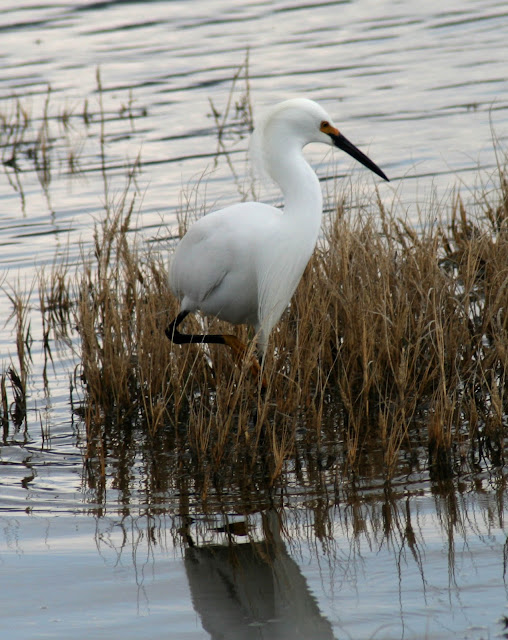The great egret is a little over three feet tall with a wingspan of almost five feet. Its feathers are entirely white. It has a long, sharp yellow bill and long gray to black legs, with non-webbed feet with very long toes. Males and females look alike, but the males are a little larger.
The great egret feeds alone in shallow water. It stalks prey like frogs, crayfish, snakes, snails and fish. When it spots its prey, it pulls its head and long neck back and then quickly stabs at the prey. On land it sometimes stalks small mammals like moles and mice. I have never seen them feed on land but I have posted pictures of Great Blue Herons hunting voles when all the water at Farmington Bay was frozen over a few years ago.
 |
| Great Blue Heron hunting Voles |
The male great egret chooses the nesting site and builds a nest platform of sticks and twigs in a tree or bush before he selects a mate. Occasionally, the great egret will build its nest on dry ground near a marsh. The female great egret lays three to five pale green-blue eggs. The eggs take about three to four weeks to incubate. Both parents incubate the eggs and feed the chicks. The chicks fledge in about six weeks. If the nest is on the ground, the chicks will walk around the nest before they fledge. Both the male and female aggressively defend the nesting territory. Great egrets nest in colonies, often with herons and ibis.

Most range maps do not include Northern Utah, one of the great things about the Great Salt Lake is the vast variety of unlikely birds that show up at our wetlands.










